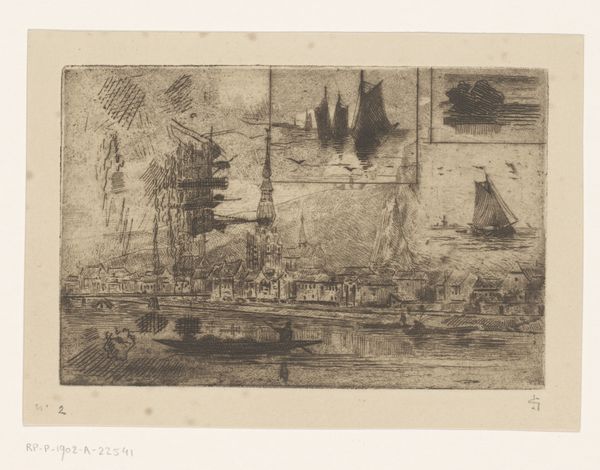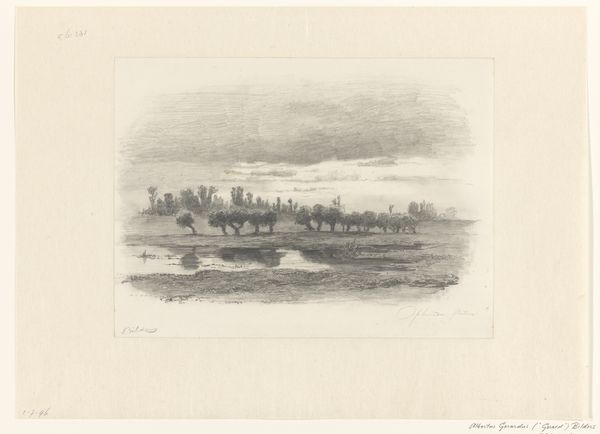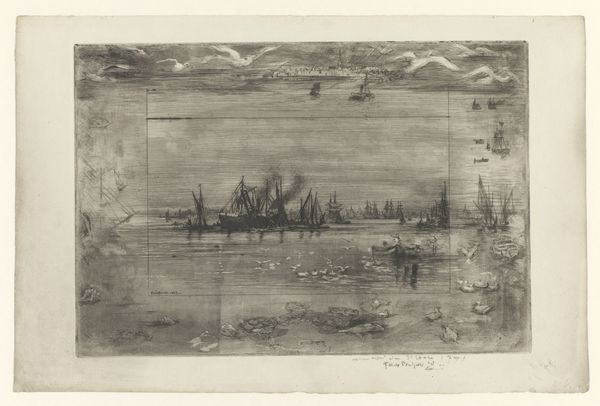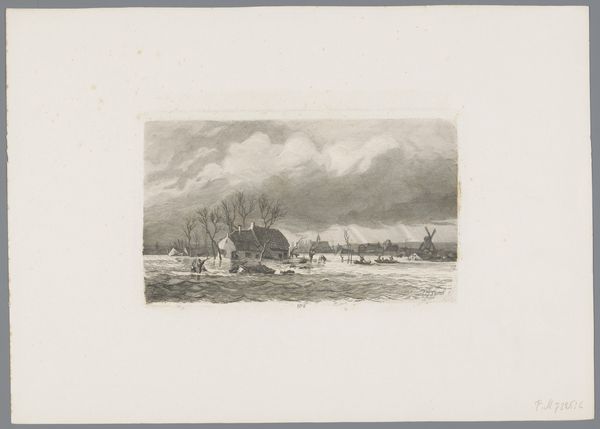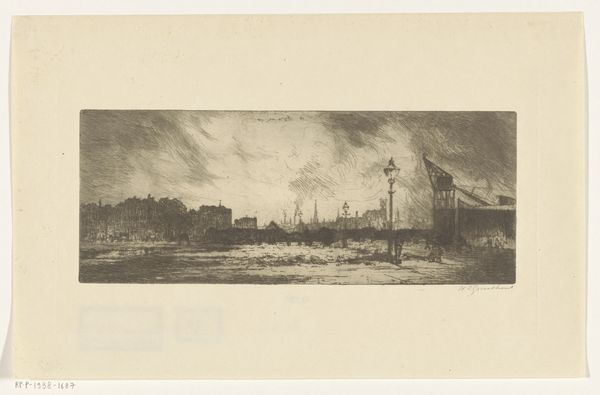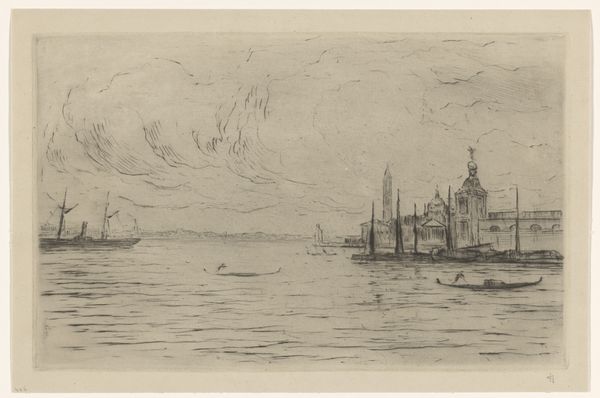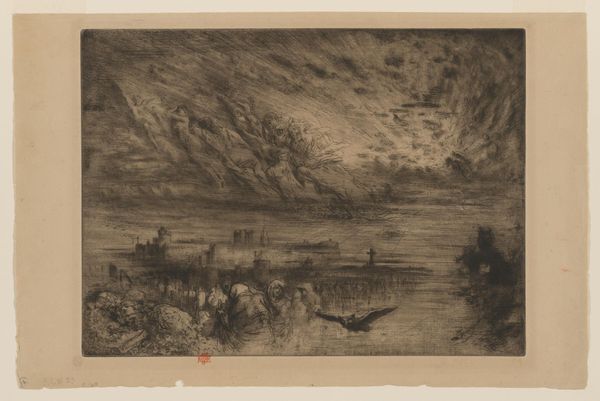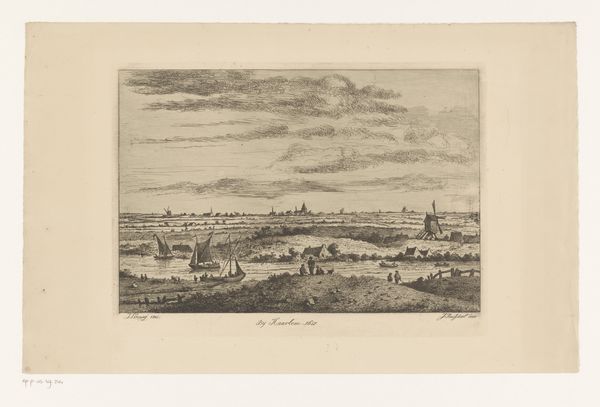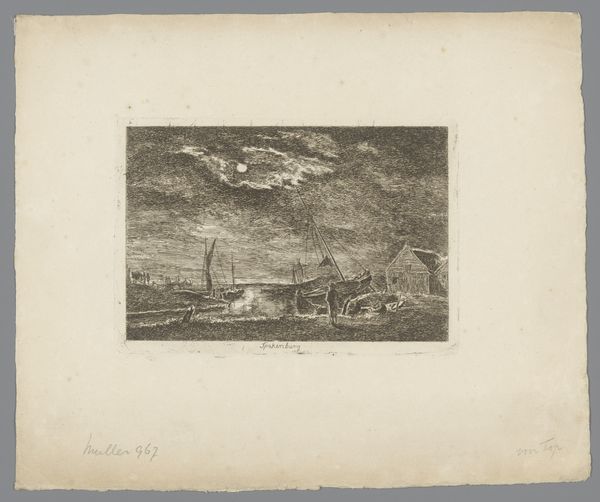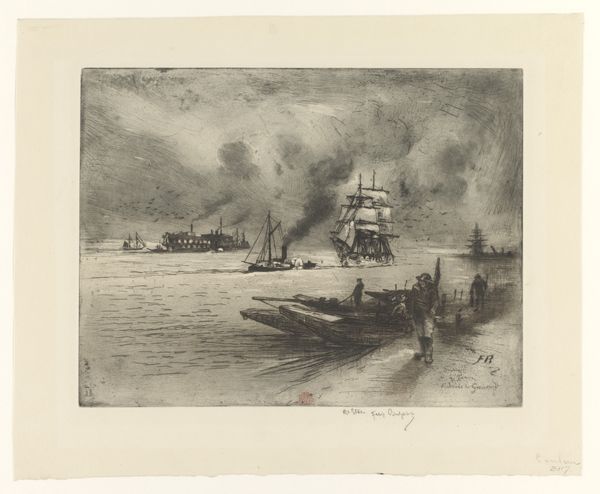
print, etching
# print
#
impressionism
#
etching
#
landscape
#
genre-painting
#
realism
Dimensions: height 318 mm, width 489 mm
Copyright: Rijks Museum: Open Domain
Ludovic-Napoléon Lepic made this etching, "Dutch Winter Landscape with Windmills and Skaters" sometime in the late 19th century. It's an image that evokes the romanticism of rural life, but it also speaks to broader social and economic shifts. Think about the setting: windmills, a frozen landscape, and figures skating. These elements aren't just picturesque; they reflect the Netherlands' reliance on wind power, its struggle with water, and the recreational activities of its people. By the late 1800s, industrialization and urbanization were rapidly changing European society. Did Lepic want to remind viewers of a simpler time? Was he trying to capture a way of life that was already disappearing? To fully understand this image, we'd need to delve into Dutch history, looking at the relationship between the people and the land, and also considering the rise of tourism. Art history is about connecting the artwork to the world in which it was made.
Comments
rijksmuseum about 2 years ago
⋮
Ludovic Napoléon Lepic is one of the original French Impressionists. He painted, but was also an innovative printmaker. He only deemed an etching to be art when the printmaker printed his own copper plate and inked it in different ways. He called this method ‘l’eau-forte mobile,’ or variable etching. The impressions displayed here demonstrate what he meant. The differences are exclusively due to various ways of inking the plate.
Join the conversation
Join millions of artists and users on Artera today and experience the ultimate creative platform.


